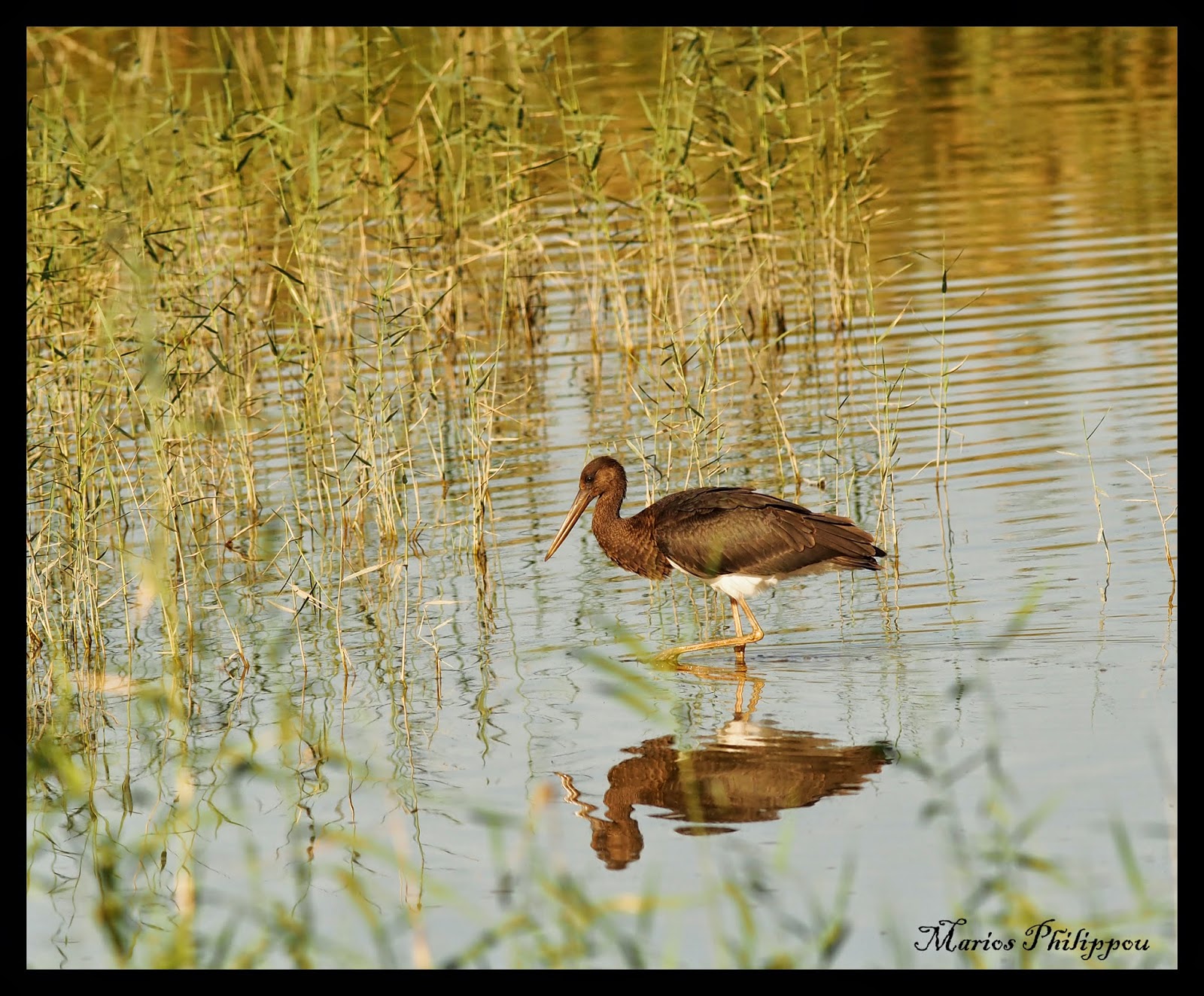Ciconia nigra ( Black Stork - Μαυροπελαργός)
The black stork (Ciconia nigra) is one of the bird which you can find it in Cyprus during its migration. Cyprus Discovery team found it and present it.
 |
| Zakaki Marsh Limassol Cyprus |
The black stork (Ciconia nigra) is a large wading bird in the stork family Ciconiidae. It is a widespread, but uncommon, species that breeds in the warmer parts of Europe (predominantly in central and eastern regions), across temperate Asia and Southern Africa. This is a shy and wary species, unlike the closely related white stork. It is seen in pairs or small flocks—in marshy areas, rivers or inland waters. The black stork feeds on amphibians and insects.
Slightly smaller than the white stork, the black stork is a large bird, 95 to 100 cm (37–39 in) in length with a 145–155 cm (5 ft) wingspan, and weighing around 3 kilograms. They can stand as tall as 102 cm.Like all storks, it has long legs, a long neck, and a long, straight, pointed beak. The plumage is all black with a purplish green sheen, except for the white lower breast, belly, axillaries and undertail coverts. The breast feathers are long and shaggy forming a ruff which is used in some courtship displays. The bare skin around its eyes is red, as are its red bill and legs. The sexes are identical in appearance, except that males are larger than females on average.
The juvenile resembles the adult in plumage pattern, but the areas corresponding to the adult black feathers are browner and less glossy. The scapulars, wing and upper tail coverts have pale tips. The legs, bill, and bare skin around the eyes are greyish green. It may be confused with the juvenile yellow-billed stork, but the latter has a paler wings and mantle, longer bill, and white under the wings.
It walks slowly and steadily on the ground. Like all storks, it flies with its neck outstretched. It has a rasping call, but rarely indulges in mutual bill-clattering when adults meet at the nest.
The black stork builds a stick nest high in trees or on cliffs. It nests in Central Europe in April to May, and is a winter visitor to northern India, Nepal east to Myanmar.
Black stork parents have been known to kill one of their young, generally the smallest, in times of food shortage to reduce brood size and hence increase the chance of survival of the remaining nestlings. Stork nestlings do not attack each other, and their parents' method of feeding them (disgorging large amounts of food at once) means that stronger siblings cannot out compete weaker ones for food directly, hence parental infanticide is an efficient way of reducing brood size. Despite this, this behavior has not commonly been observed Wikipedia
 |
| Zakaki Marsh Limassol Cyprus |
 |
| Zakaki Marsh Limassol Cyprus |
 |
| Zakaki Marsh Limassol Cyprus |
 |
| Zakaki Marsh Limassol Cyprus |






0 σχόλια:
Δημοσίευση σχολίου